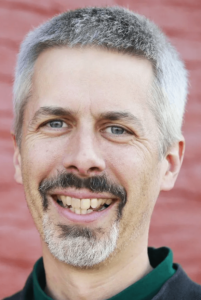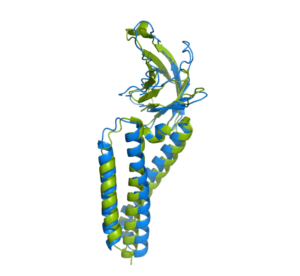Can AI help us make more virtuous choices? Can it make us more heroic? More creative? More compassionate? More oriented to our community’s well-being? To our world’s well-being?
It’s worth asking. In the last of our Seven Principles in Unitarian Universalism, we state our “respect for the interdependent web of all existence of which we are a part.”
 Rev. Forrest Gilmore, Executive Director of the Shalom Community Center in Bloomington, Indiana, calls our Seventh Principle, a “glorious statement.”
Rev. Forrest Gilmore, Executive Director of the Shalom Community Center in Bloomington, Indiana, calls our Seventh Principle, a “glorious statement.”
“It’s our response to the great dangers of both individualism and oppression. It is our solution to the seeming conflict between the individual and the group.”
Our Seventh Principle may be our way to “fully embrace something greater than ourselves,” he suggests.
This may someday mean inviting AI to join us in an expanding array of “communities of interpretation,” as described by Mark Graves.
“Imagine, for example, an AI member of an international criminal court, or an AI voter on a regulatory body, or an AI member of the board of a not-for-profit or social benefit corporation.”
‘Molecular Machines’
In biology, AI already is vastly expanding our understanding of the interdependent web that defines the physics of protein folding, the transformation of a one-dimensional sequence of amino acids into the three-dimensional molecules that underpin every biological process in every living thing.

In December 2020, AlphaFold predicted this structure of SARS-COV-2. The prediction is in green, while the experimental result is in blue. It was a close match.
They’re the “molecular machines that make life on earth work,” says Cambridge University researcher Ted Stevens puts it. That makes them a primary target for many drugs and a key ingredient in new therapeutics.
“Nearly everything your body does, it does with proteins: they digest food, contract muscles, fire neurons, detect light, power immune responses, and much more,” says Stevens. “Understanding what individual proteins do is therefore crucial for understanding how bodies work, what happens when they don’t, and how to fix them.”
To map a single protein once was such an arduous task that Ph.D. students would devote an entire thesis, using X-ray crystallography as their main tool. Thanks to DeepMind, biologists now have a deep-learning algorithm that can do the job in microseconds. Last year, DeepMind published a database of 170,000 protein maps, including all 20,000 that make up a human. In July, they announced the expansion of this database to more than 200 million proteins, including virtually every protein known to science.
“Our partners are already using AlphaFold to accelerate progress on important real-world problems,” writes DeepMind CEO and Founder Demis Hassabis.
“For instance, the Drugs for Neglected Diseases initiative (DNDi) is advancing drug discovery for neglected diseases, such as Chagas disease and leishmaniasis, which impact millions within poor and vulnerable communities.
“Meanwhile, a scientist at the life and material science company, Schrödinger, is searching for ways to improve medicine by creating selective drugs, which can focus on one target rather than many.
“At the Centre for Enzyme Innovation (CEI), researchers are discovering and engineering enzymes for breaking down single-use plastics, while teams from universities across Norway and the USA mapped the structure of honey bee Vitellogenin (Vg), a central protein for understanding the immune systems of egg-laying animals.”
The Technium
If we think of proteins as exquisite tiny machines, we can regard them as vital constituents in what Kevin Kelly calls the “Technium.”
Take, for example, an ordinary pen:
“It probably took 100 different technologies to make this pen technology, technologies of plastic, ink, ball bearing, metal, and each of those different technologies probably themselves required another 100 sub-technologies to support it.
The Technium, says Kelly, is the “largest network of all the technologies working together to support each other, and while this pen is definitely not alive, there is a sense in which the Technium as a whole exhibits life-like behaviors in the same way that your neuron doesn’t really think, but the network of neurons in your brain can make an idea.”
Where does Kevin Kelly’s concept of the Technium end and Unitarian Universalism’s concept of the “interdependent web” begin? It’s hard to say. Perhaps they’re one and the same.


